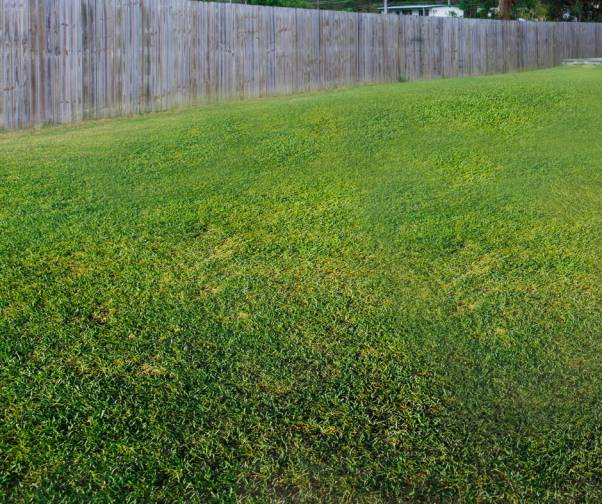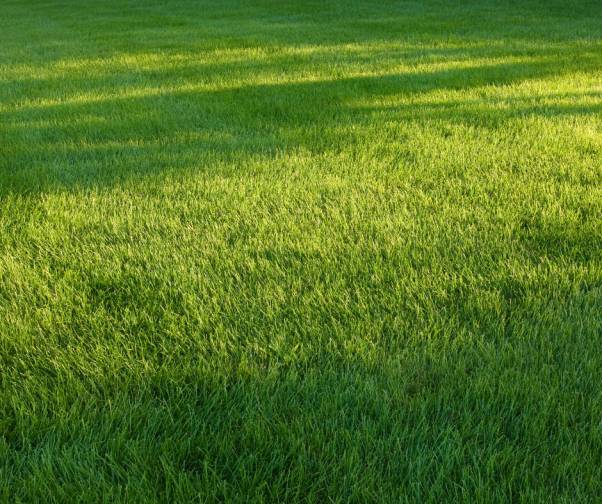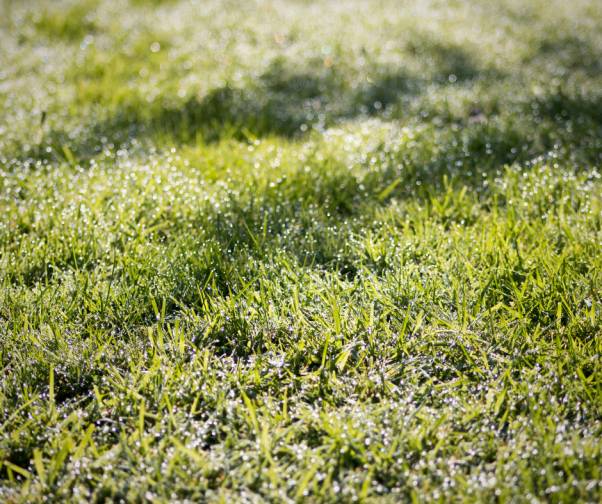Common Grass Types in Australia: Find the Perfect Lawn for Your Home
Author: Stefan Palm Date Posted: 7 July 2025
Australia's diverse climates—from the tropical north to the temperate south—require careful selection of grass types to ensure a lush, resilient lawn. Understanding the characteristics of different grass varieties can help homeowners choose the best fit for their region and lifestyle.

Common Grass Types in Australia
Australian lawns predominantly feature two categories of grasses: warm-season and cool-season varieties. Warm-season grasses thrive in the hotter regions, while cool-season grasses are suited for cooler climates.
Quick Comparison Table
| Grass Type | Season | Ideal Climate | Shade Tolerance | Drought Tolerance | Maintenance Level |
|---|---|---|---|---|---|
| Buffalo | Warm-season | Tropical to cool | High | High | Low |
| Kikuyu | Warm-season | Tropical to cool | Low | High | High |
| Couch | Warm-season | Tropical to cool | Low | Moderate | High |
| Zoysia | Warm-season | Tropical to temperate | Moderate | High | Low |
| Kentucky Bluegrass | Cool-season | Cool to temperate | Moderate | Low | High |
| Perennial Ryegrass | Cool-season | Cool to temperate | Low | Low | High |
| Fine Fescues | Cool-season | Cool | High | Moderate | Low |
| Tall Fescue | Cool-season | Cool to temperate | Moderate | High | Moderate |
Grass Selection by Climate Zone
- Tropical & Subtropical (e.g., QLD, NT): Kikuyu, Zoysia, Buffalo
- Temperate (e.g., NSW, SA, WA): Buffalo, Couch, Kikuyu
- Cool (e.g., VIC, TAS): Buffalo, Couch, Kikuyu, Tall Fescue, Fine Fescues
How to Identify Your Lawn
Identifying the grass in your lawn is an important step in managing it properly—each type has different watering, mowing, fertilising, and maintenance needs. If you’ve inherited a lawn or simply don’t know what you’re dealing with, here are several ways to help identify your turf:
1. Leaf Shape and Texture
- Buffalo: Broad, flat leaves with a soft feel and a thick thatch layer.
- Kikuyu: Coarse, hairy leaves and stems with a bright green colour.
- Couch: Fine, narrow blades with dense, low-growing habits.
- Zoysia: Fine to medium blades with a soft, spongy feel.
- Tall Fescue: Wide, coarse leaves with upright growth.
- Fine Fescues: Very thin, needle-like blades that are soft and wispy.
- Ryegrass & Kentucky Bluegrass: Shiny, narrow blades and darker green colour.
2. Growth Habit and Spread
- Couch, Kikuyu, and Buffalo spread via runners (stolons or rhizomes), making them self-repairing.
- Tall Fescue and Ryegrass grow in clumps and require reseeding for coverage.
- Zoysia spreads slowly and forms a dense mat.
- Fine Fescues grow slowly and are ideal for shady, low-traffic areas.
3. Colour and Seasonal Performance
- Buffalo and Zoysia keep their colour well into winter.
- Couch and Kikuyu tend to go dormant and lose colour in cold conditions.
- Cool-season grasses stay green year-round in southern regions but may brown in hot, dry summers.
4. Shade and Wear Tolerance
- Thrives in full sun but struggles in shade: Kikuyu, Couch
- Tolerates moderate to full shade: Buffalo, Tall Fescue, Fine Fescue
5. Feel Underfoot
- Buffalo: Soft and springy.
- Kikuyu: Coarse or prickly due to hairy runners.
- Zoysia: Thick, plush feel.
- Couch: Fine and smooth, low profile.
6. Ask a Professional or Use Online Tools
If you’re still unsure, take a sample to your local turf supplier (like Paul Munns Instant Lawn) or send a close-up photo for expert identification. Many suppliers also offer online turf ID tools and visual guides.
Warm-Season Grasses

Kikuyu
Kikuyu is one of Australia's most popular warm-season grasses due to its aggressive growth and ability to quickly establish a thick, green lawn. It has a coarse leaf texture and a bright green colour. Kikuyu thrives in full sun and tolerates drought and wear extremely well, making it ideal for high-traffic areas such as family backyards, parks, and sports fields. However, it has poor shade tolerance and can become invasive if not managed properly. Regular mowing and edging are essential to keep it looking tidy and contained.
Couch
Couch grass features a fine leaf blade and dense growth habit, giving it a manicured, professional appearance. It’s often used on golf courses, sporting fields, and home lawns where visual appeal is a priority. Couch performs best in full sun and warm conditions, with moderate drought tolerance. It responds well to fertilising and regular mowing, which keeps it lush and weed-free. However, it struggles in shade and may suffer during winter, going dormant and turning brown in colder climates.
Zoysia
Zoysia is a slow-growing warm-season grass known for its beautiful appearance and low maintenance needs. It has a fine-to-medium blade and forms a dense, soft lawn underfoot. Zoysia tolerates heat and drought exceptionally well, needing less water than Kikuyu or Couch once established. It also has good wear resistance and moderate shade tolerance. Its slower growth rate means less mowing, but also slower recovery from damage. It’s ideal for homeowners wanting a premium lawn with minimal upkeep.
Buffalo
Buffalo grass is a favourite in Australian lawns thanks to its broad leaf, soft texture, and excellent shade tolerance. Modern soft-leaf varieties like Sir Walter DNA Certified and Kings Pride Buffalo are non-invasive and offer superior comfort and visual appeal. Buffalo forms a thick, resilient lawn that suppresses weeds and handles both drought and wear well. It performs across a range of climates—from tropical to cool—and is perfect for shaded areas, front yards, and family-friendly spaces. It requires less mowing than Couch or Kikuyu and responds well to seasonal fertilising.
Cool-Season Grasses

Kentucky Bluegrass
Kentucky Bluegrass is a premium cool-season turfgrass known for its vibrant colour, fine texture, and dense growth. It spreads via underground rhizomes, which allow it to self-repair and fill in bare spots over time. It prefers full sun and thrives in cooler climates with regular watering. While it delivers a luxurious lawn surface, it requires consistent care—frequent mowing, fertilising, and irrigation. It’s often used in blends for ornamental lawns and cool-climate sports surfaces.
Perennial Ryegrass
Perennial Ryegrass germinates quickly, often within 5–10 days, making it ideal for overseeding or establishing a lawn in a hurry. It produces a fine to medium leaf with a deep green colour and performs well in cooler climates. Its upright growth habit makes mowing easy, but it has poor drought and heat tolerance, which limits its use in hotter regions. Ryegrass is best suited for temporary coverage, repairing worn patches, or blended into other turf mixes for winter colour.
Fine Fescues
Fine Fescues include a group of cool-season grasses such as Creeping Red Fescue, Chewings Fescue, and Hard Fescue. They are known for their exceptional shade tolerance and fine, wispy blades. These grasses are ideal for low-maintenance lawns in shady or low-traffic areas. They require less mowing and fertilising than other turf types and grow well in infertile soils. Fine Fescues are often used in seed blends to improve performance in partially shaded zones.
Tall Fescue
Tall Fescue is a versatile cool-season grass with broad blades and a deep root system that gives it excellent drought resistance compared to other cool-season types. It grows well in full sun to partial shade and can tolerate moderate foot traffic. Tall Fescue establishes quickly and offers a lush, green lawn in temperate to cooler climates. It requires consistent watering during dry periods and benefits from regular fertilising. This makes it a good all-round choice for residential lawns in southern Australia.
FAQ's
Which grass type is best for my region's climate?
Selection depends on your local climate. Warm-season grasses like Buffalo and Kikuyu are suited for warmer regions, while cool-season grasses like Tall Fescue and Fine Fescues thrive in cooler areas.
Can I mix different grass types in my lawn?
Mixing grass types can be beneficial for resilience and appearance. However, ensure the selected varieties are compatible in terms of growth habits and maintenance needs.
What is the most aggressively growing grass?
Kikuyu is known for its aggressive growth, rapidly covering bare spots but requiring regular maintenance to prevent invasiveness.
What is the most common grass in South Australia?
Buffalo and Couch grasses are prevalent in South Australia due to their adaptability to the region's climate.
How do I identify my grass?
Examine leaf blade width, colour, and growth patterns. Consulting local lawn care experts can also provide accurate identification.
How to identify grasses?
Identification involves observing physical characteristics and growth habits. Resources like lawn care guides and expert consultations can assist in accurate identification.
Selecting the right grass type ensures a healthy, vibrant lawn tailored to your region's climate and your maintenance preferences. Consult with local lawn care professionals for personalised advice and support.


